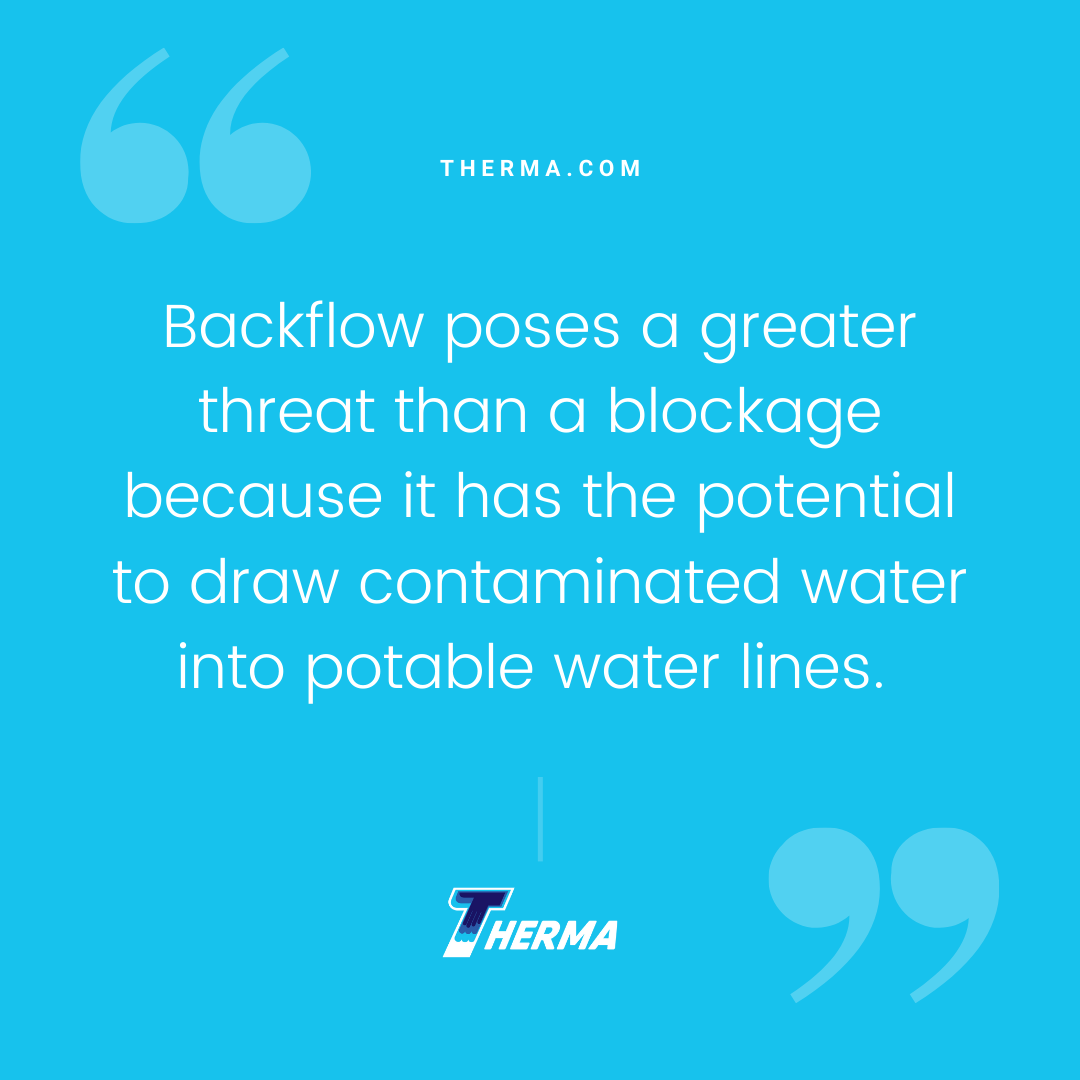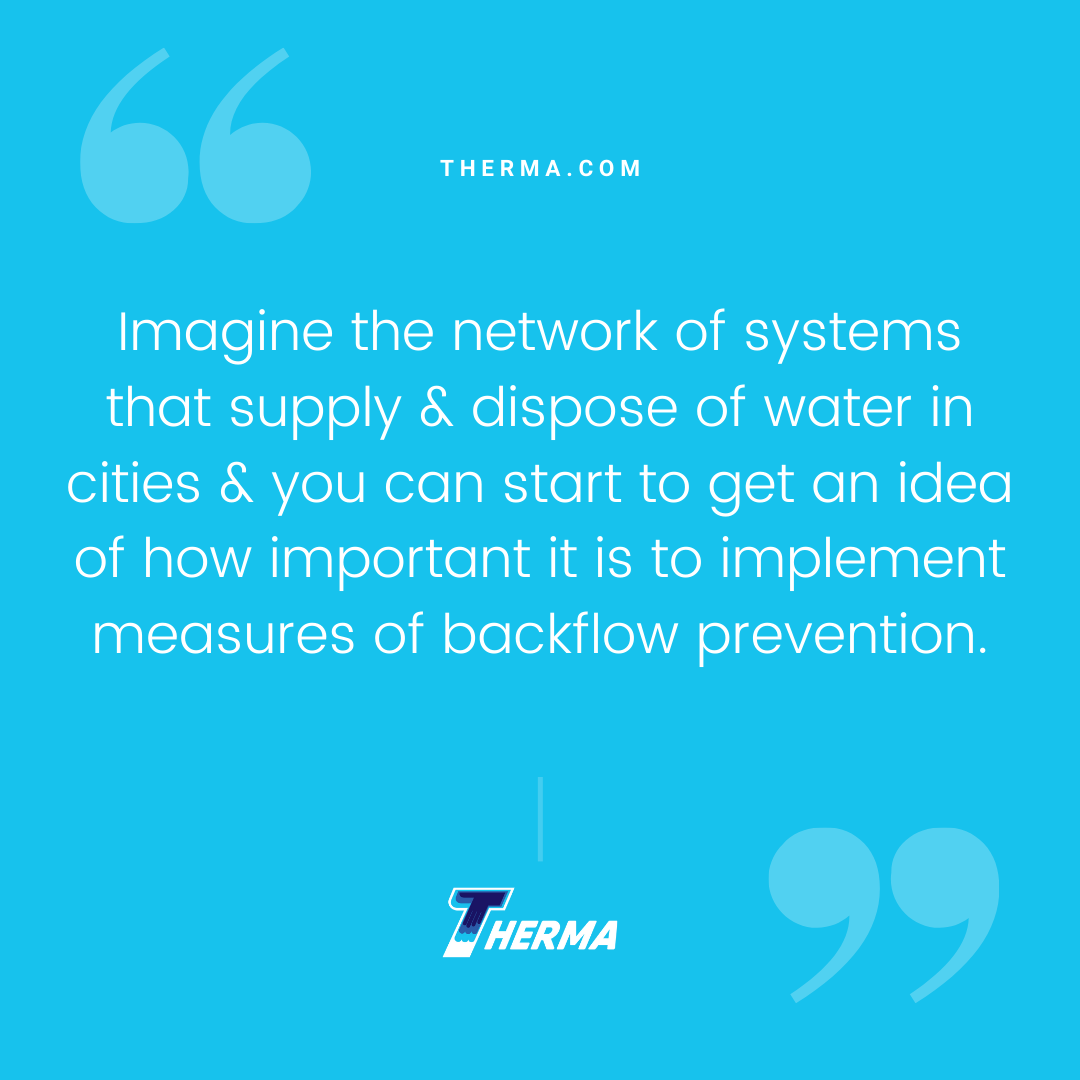by Ali Kriscenski
In plumbing, the term backflow refers to water running in the wrong direction. As plumbing systems are designed to isolate and move water according to different stages of use, backflow can create contamination, property damage, and health risks. Backflow poses a greater threat than a blockage because it has the potential to draw contaminated water into potable water lines.
Causes of Backflow
There are two types of backflow situations: backpressure backflow and siphonage backflow. Back Pressure is caused by excess pressure on the waste water line of a system, for example if there is thermal expansion of the water. Siphonage backflow is caused by a drop in pressure on the fresh water side, such as a water main break.
What To Know About Backflow Prevention
The causes of backflow can be sudden and unpredictable. Imagine the network of systems that supply and dispose of water in cities and you can start to get an idea of how important it is to implement measures of backflow prevention. The nature of backflow incidents makes automatic prevention the best practice in order to prevent property damage and contaminant exposure.
Backflow Prevention in Residential Buildings
Residential buildings have simpler plumbing systems than larger complexes or commercial buildings. The risk of backflow exists, but typically at a smaller scale. For this reason, less complex methods and devices can be used to protect structures and occupants.
An air gap is a preventative measure used throughout residential plumbing systems as it provides a way to collect contaminated water without the need for mechanical parts. An air gap is an open vertical space between an end-use device and a space to collect backflow water.
Backflow Prevention in Commercial Buildings
Just like residential buildings, businesses depend on clean water to provide services and produce goods. The types of businesses required to install backflow preventers include restaurants, dry cleaners, medical buildings, beauty salons, spas, multi-tenant retail, and buildings with fire or sprinkler systems. Commercial building codes vary between municipalities, but many requirements are fairly standard and can be fulfilled with common preventative devices. The building codes determine the suitable device for an application based on factors such as piping size, location and degree of hazard.
Types of Backflow Prevention Devices:
- Atmospheric Vacuum Breaker (AVB): An AVB is an elbow-shaped device fitted with a valve to prevent water backflow. It is commonly used on faucet valves, toilets or flush valves.
- Double Check Valves (DCV): This device is used to keep water flowing in one direction to prevent contaminated water from entering the plumbing system. It consists of a ball or gate valve assembly that isolates water and allows testing to be performed. It is typically used in city water supplies, public sewer systems and other water service connections.
- Double Check Detector Assembly (DCDA): This device is intended to prevent contamination from a fire system, where pumps and stagnant water create special conditions. As the name indicates, it also detects water leaks and unauthorized use.
- Reduced Pressure Zone Device (RPZ): An RPZ is a more complex device that is used in conditions where water backflow poses a serious threat to occupants. The assembly includes two independent check valves with a chamber of lower pressure than the supply line. It allows excess pressure to be released in order to maintain the pressure balance.
Backflow Preventer Testing and Maintenance
Where a backflow preventer is already installed, the building owner is typically required to have it tested annually by an independent service provider. When a new backflow preventer is needed, a professional plumbing solutions provider can help guide you through the process and navigate the local building code requirements. Once installed, the devices will require initial inspection, testing and fulfilling the necessary paperwork with the local water company.
While it may seem daunting to ensure your building and occupants are safe from water backflow, preventative devices and methods can provide significant protection. With the assistance of an experienced service provider, you can install and maintain the needed measures to protect your investments. Contact Therma today!
Ali Kriscenski was trained in high-performance building design at Boston Architectural College. She has worked with leading architecture and construction firms in NYC and New England, and served on the executive team at Forest Stewardship Council International. She was Managing Editor at Inhabitat and has worked pro bono for the Green Building Institute, ISEAL Alliance and Habitat for Humanity.
Sources
US Environmental Protection Agency – How the EPA Regulates Drinking Water Contaminants
Public Policy Institute of California – California’s Water: Providing Safe Drinking Water









